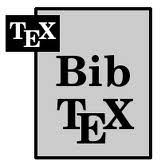Implementation of K-Nearest Neighbor Algorithm on Density-Based Spatial Clustering Application with Noise Method on Stunting Clustering
Abstract
This paper studies the implementation of the K-Nearest Neighbor (KNN) algorithm on Density-Based Spatial Clustering Application with Noise (DBSCAN) method on stunting Clustering in the eastern region of Indonesia in 2022. The DBSCAN method is used because it is more efficient to perform the Clustering process for irregular Clustering shapes. The main objective of this study is to apply the KNN algorithm to the DBSCAN Clustering technique in 161 Districts/Cities in 11 provinces in eastern Indonesia. A comparison of the performance evaluation of the DBSCAN Clustering technique is done by considering the value of the Silhouette score, BetaCV score, and Davies-Bouldin score indicating the quality of the Clusters formed with the lowest results scores of 0.67 and 1.84 with epsilon value = 3.4 and minimum point value = 2 resulting in 4 Clusters. The results of Clustering 161 Districts and Cities based on the factors that cause stunting formed 4 Clusters where Cluster 0 consists of 119 Districts and Cities with very high stunting characteristics, Cluster 1 consists of 3 Districts and Cities with high stunting characteristics, the results of Cluster 2 consist of 2 Districts and Cities with low stunting characteristics, then the results of Cluster 2 consist of 2 Districts and Cities with low stunting characteristics and Cluster 3 consists of 2 Cities with very low stunting characteristics.
Downloads
Copyright (c) 2024 Friansyah Gani, Hasan S. Panigoro, Sri Lestari Mahmud, Emli Rahmi, Salmun K. Nasib, La Ode Nashar

This work is licensed under a Creative Commons Attribution-ShareAlike 4.0 International License.
 This work is licensed under a Creative Commons Attribution-ShareAlike 4.0 International License.
This work is licensed under a Creative Commons Attribution-ShareAlike 4.0 International License.
Copyright is retained by the authors, and articles can be freely used and distributed by others.

 Friansyah Gani(1)
Friansyah Gani(1)

.png)











